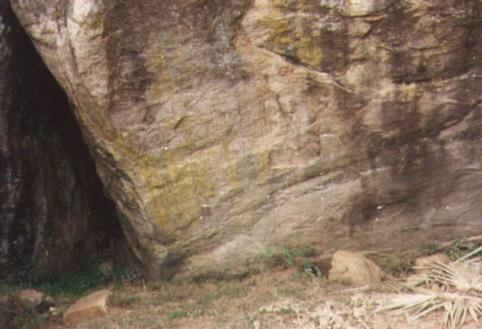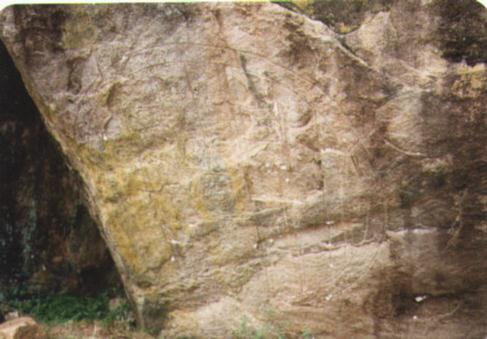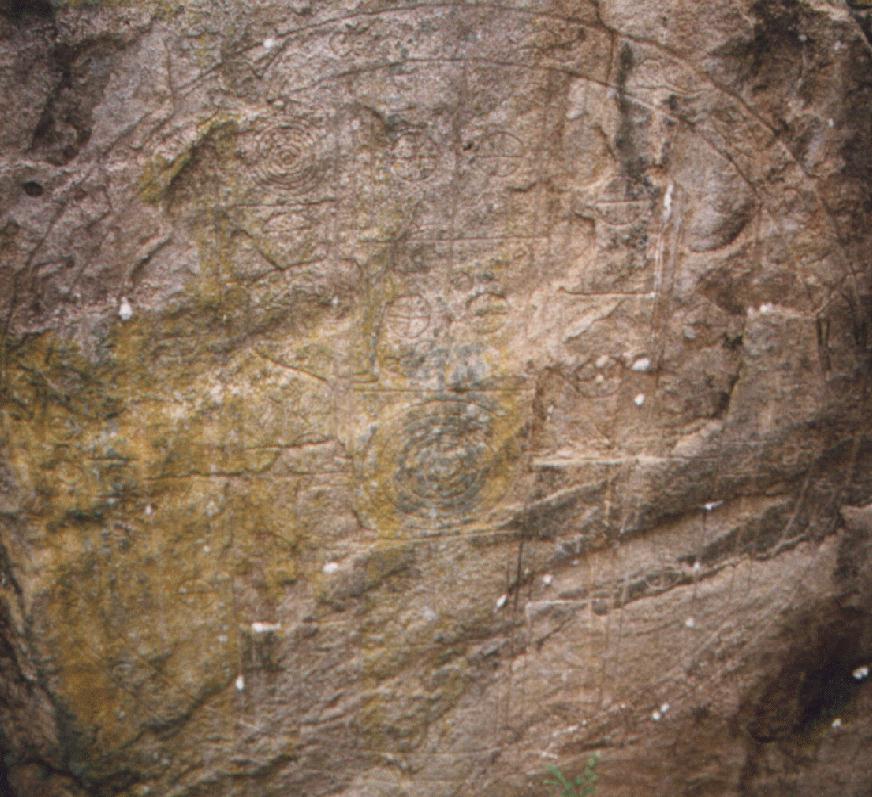Sakwala Chakraya
Archaeological Survey of Ceylon
North-Central and Central Provinces.
Annual Report
1901
by H. C. P. Bell C.C.S.,
Archaeological Commissioner
Ordered by his excellency the Governor to be Printed.
Colombo: LIII - 1907 CEYLON.
Printed by H. C. Cottle, Government Printer, Ceylon.
|

|
Page 5
(iii) Tisavewa Ruins.
Upon the completion of the three groups of ruined buildings situated immediately east of Ruwanveli
Dagaba excavations were transferred to a fresh locality, about a mile to the south-west of the Udamaluwa
(Sacred Bo Tree enclosure), containing ruins of an entirely different character from any yet exploited.
A ridge of granitic formation can easily be traced running on from the Vessagiri Rocks northwards,
past Isuruminiya, below the bund of Tisavewa. Thence it crosses the Anuradhapura-Puttalam Road, and
bisects the Mirisavetiya area and Basawakkulam tank; and trends ever north through the western
portion ("Galge" and other rocks)+ of the Lankarama and Jetawanarama areas.
The portion of the ridge just beyond the northern confines of Isurumuniya Rock Temple lies at
the very foot of the embankment of the tank (Tisavewa), and is marked by a line of rocks of less magnitude
than the Isurumuniya boulders.
The rocks are mostly crowded together into two clusters (Y, Z), both resting upon the narrow
...leba.... ridge.
The ..... ...... separate entity consist of caves, structural buildings, and three exceptionally
fine pokunu formed of dressed stone, the whole belonging either to the Isurumuniya sangharamaya
or to a sister monastery adjoining it. The ruins at this ancient site, though comparatively
isolated did not escape considerable modification by later time additions, into which brick and mortar
freely entered.
Page 8
Rocks Z.
Behind the pansala, south-west, is the second line of boulders (Z), separated from the bathing-house
and northern cluster of rocks (Y) by 10 yards of open space.
These southerly boulders, four or five in all, are both more massive and taller than those of the
other group. The most southerly exhibits rectangular grooves of some building which once crowned its
summit; both faces of two boulders, overhanging west and east, were adapted as cave shelters.

| The Site of the Sakwala Chakraya on the bund of Tisavewa in Anuradhapura, Lanka.
Text on this page extracted from an original copy of Annual Report.
The photographs were taken when I visited the site in 1991, and again in November 1995.
The site is unmarked and unknown to most tourist guides. Maybe it should remain that way
until properly protected.
|
|
Page 9
Cave No 2 lies beneath the west face of the penultimate rock forming its back and roof
and floor. It was entered by a few steps leading down from the rock ridge.
A worn, and hardly recognizable asanaya of bricks rests against the rock at back.
To the left (north) of this seat, or alter, is cut shallowly on the steeply projecting rock face a great
chakra, or circle 6 ft in diameter, scored by rectangular divisions containing figures (mostly small circles),
the whole girt, as a tyred wheel, by a band on which is displayed variant piscine and crustacean life
swimming round from right to left.
The centre of the chakra is filled by a large circle comprising seven concentric rings, within a square
1 ft 2 in., to which cross lines are drawn vertically and horizontally from the encircling hand, cutting
the chakra into quadrants. Further, parallel lines divide the circles vertically into ten strips, or slices,
varying in width from 3 in. to 9 in., but matching to left and right of the central vertical line.
All strips but the outer two are bisected by the horizontal base line and subdivided into dual
or quadripartite partitions The outermost strips, unbisected, contain a single small circle, quadrisected
by cross lines, and a figure of phallic suggestion. In each of the penultimate divisions right and left
is a tiny circle in line with the horizontal bisection of the chakra, but nothing else. In the third pair are
shown four more quadrisected circles, two and two, one in each of the upper and lower partitions left and
right. The fourth strip to right contains four more such circles, bigger, and each in a separate partition.
But that to left has compressed its circles into a quadripartite panel below the horizontal base line;
leaving the upper panel free for four distinct diagrams - second seven.ringed circle (differing only
in size from its larger counterpart in the centre of the chakra), beneath which are two umbrella~like emblems,
and a pinnated three.forked figure -the whole interwined by a fret. Each of the eight divisions of the
fifth strips, which meet as one broad band, above and below the concentric ringed circle on either side
of the central vertical line of the chakra holds one of the small circles with cross lines ; the two left
upper partitions containing also a square and a wavy diagonal line. Outside all these divisions is the
4 in tyre or band bounding the chakra.
| 
The cave of Sakwala Chakraya |

The rock of Sakwala Chakraya |

The rock face with the Sakwala Chakraya
This weird circular diagram, incised on the bare rock -even more unique in a way than the
elephant bas-reliefs of Pokuna A-may with every show of reason claim to be an old-time cosmographical
chart illustrating in naivest simplicity the Buddhistic notions of the universe.
The concentric circles with their interspaces at the centre of the chakra can assuredly mean only
the Sakvala, in the centre of which rises Maha Meru, surrounded by the seven seas (Sidanta) and walls of
rock (Yugandhara, &c.) which shut in that fabulous mountain, l,680,000 miles in height, half below, half
above, the ocean's surface. Sun and moon (in the second strips) lie on either side of the Sakvala : round
about in space are scattered innumerable other worlds represented by quadrisected circles.* Below and
around is the "world of waters" (i.e., the circular band) in which swarm gigantic uncouth denizens-fish,
turtle, crab, chank, and other marine fauna. !
This ancient "map of the world"-perhaps the oldest in existence is of quite extraordinary interest.
Its presence here, within an eremite's cave at an out-of-the way nook of ancient Anuradhapura,
testifies to the antiquity of that astronomical lore still pursued in some of the Buddhist monasteries of
Ceylon.
No inscriptions occur at any of the caves; nor have any been discovered anywhere among these
ruins.
*Still used as an astrological emblem for the earth.
! See Spence Hardey, "The Legends and Theories of the Buddhists." pp 80-96, 1866 and the authorities
quoted.
comments




